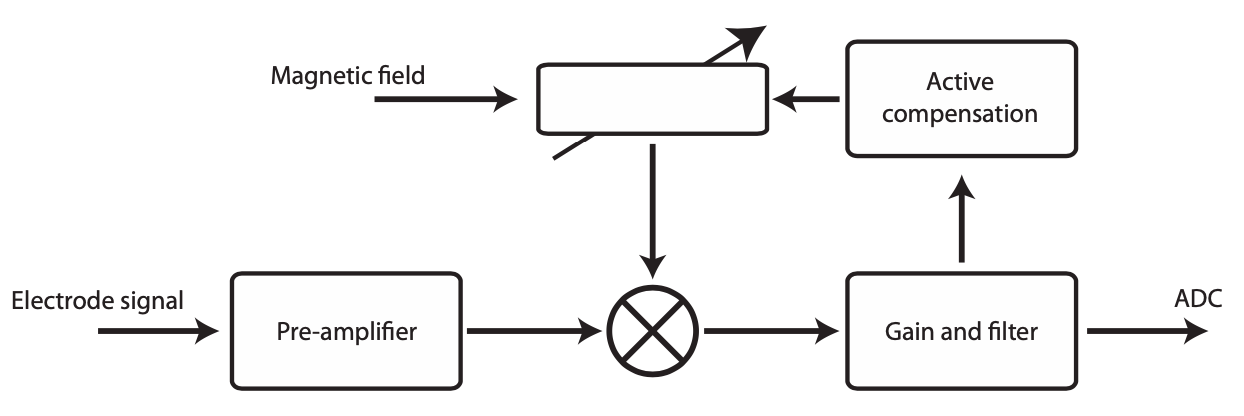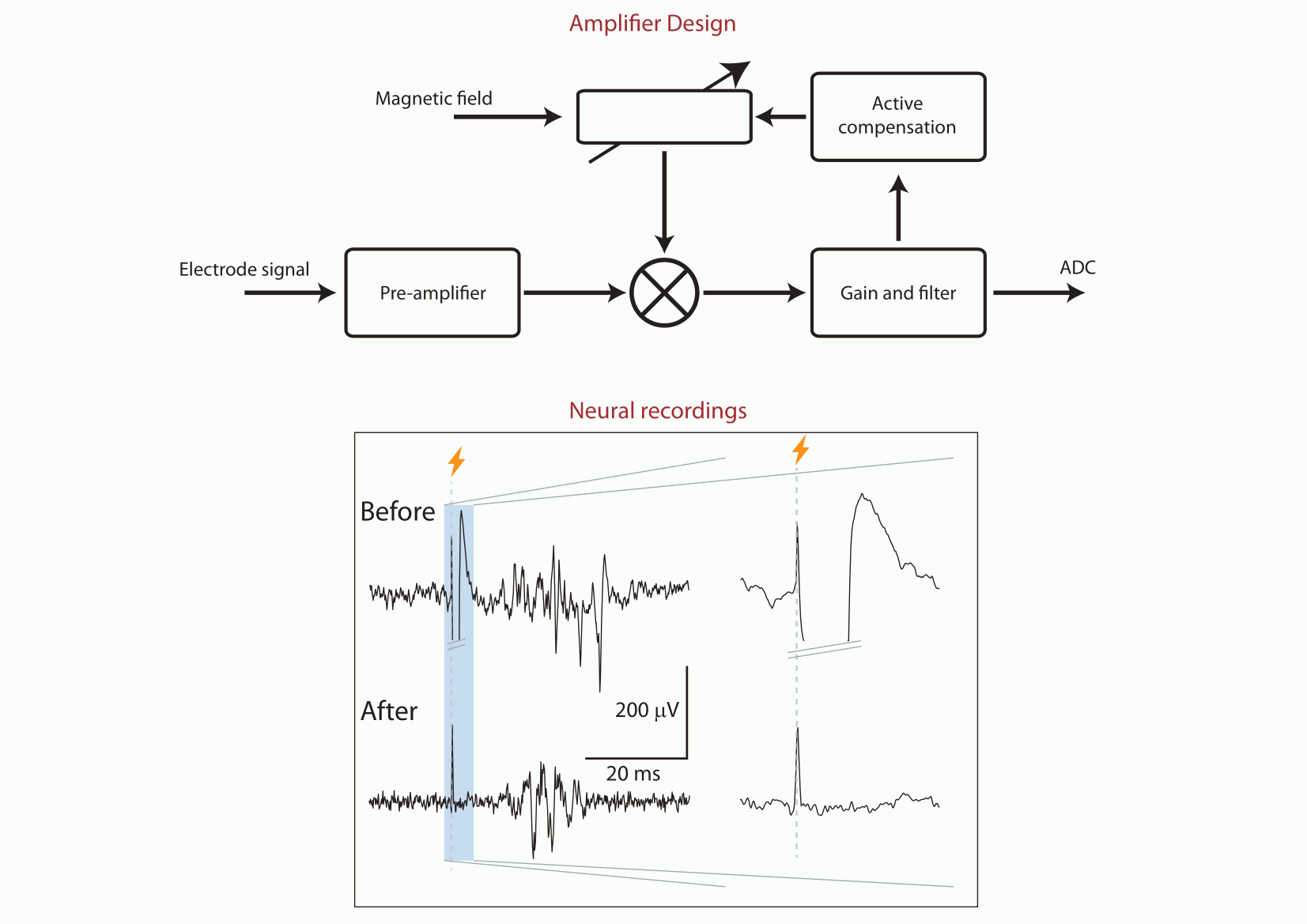Development of TMS-grade electrophysiology equipment

Research Area:
Neurophysiology and Brain StimulationResearchers:
Vishnudev Ramachandra; Martin A. Giese; Alia BenaliDescription:
Numerous theories about how TMS interacts with brain are based on simulations or adaptations from other brain-stimulation techniques. Hence, recording the neural activity during TMS is obligatory for understanding the action of TMS on human brain. But the large magnetic field associated with TMS disrupts electrical recordings and prevents simultaneous measurement of evoked neural activity. Therefore, innovative methods that suppress the magnetic signal artefact are needed in order to simultaneously record neural activity with TMS.
Hitherto methods, unable to suppress the magnetic signal artefact, have largely omitted the period when TMS is applied; with duration of omission varying depending on recording methodology used (Virtanen et al 1999, Li et al 2017, Mueller J K et al 2014). Although they have demonstrated some fundamental aspects related to TMS evoked activity, none of them provide a complete picture of the same. Moreover, the varying durations across methodologies is mainly due to multiple nature of the artefact resulting from magnetic stimulation. The longest nature (of triboelectric kind) causes disruption up to several milliseconds from the time of stimulation and the shortest nature (of electromagnetic kind) manifests for as long as stimulation lasts, in the order of hundreds of microseconds. Hence, to record the complete neural trace evoked by TMS, Axel Oelterman from MPI-BC and we have collaboratively devised methods to suppress each of the different sources of artefacts and developed a non-interruptive universal electrical recording system that is not disrupted by TMS.
Using the novel recording system in a pilot experiment, we measured the activity of layer 5a neurons simultaneously with TMS application in rodent brain. The recorded neural activity has no signal loss associated with magnetic stimulation and the residual artefact is well below the recording range in rodent brain (see figure below). Moreover, with our approach of isolating and suppressing different sources of artefact, we are confident that in a worst-case scenario the signal loss will be restricted to well under 140 µs duration. We envision our method / system to be widely used in different methodologies thereby playing a crucial role in the quest for understanding the TMS action in human brain.
Cooperation partner:

The top figure shows the block diagram of the novel recording system. The bottom figure shows snippet of neural activity during TMS before and after suppressing the magnetic signal artefact.
